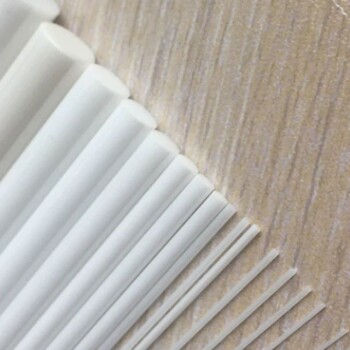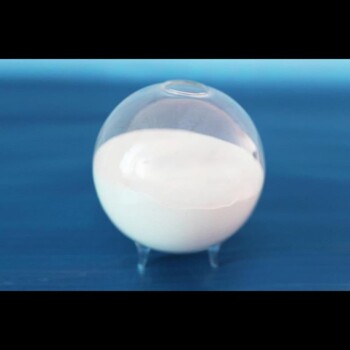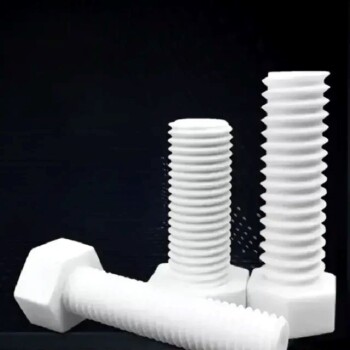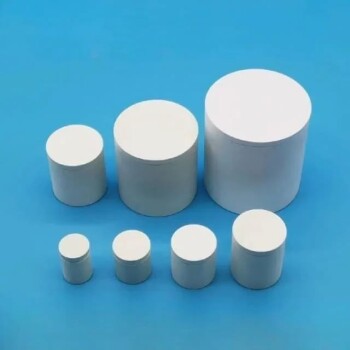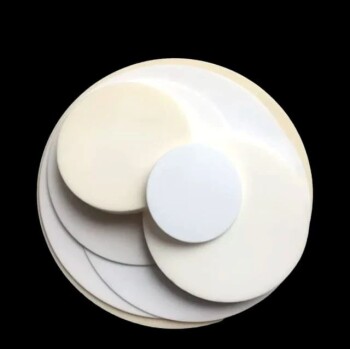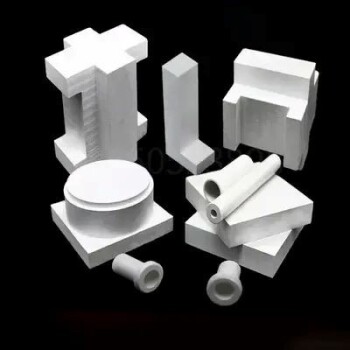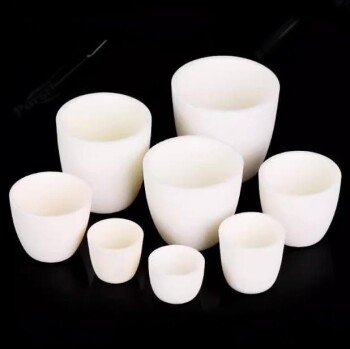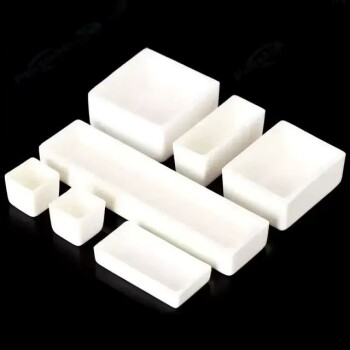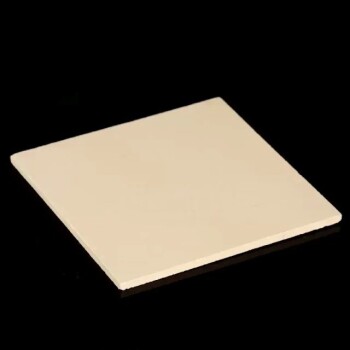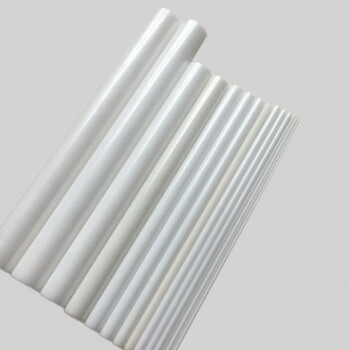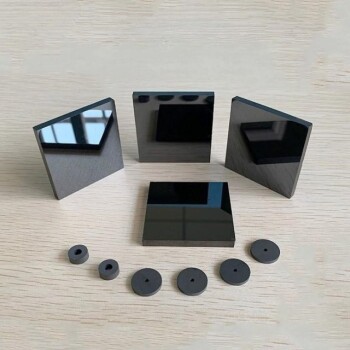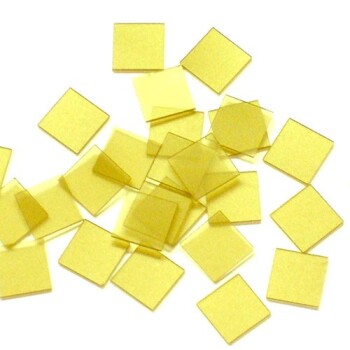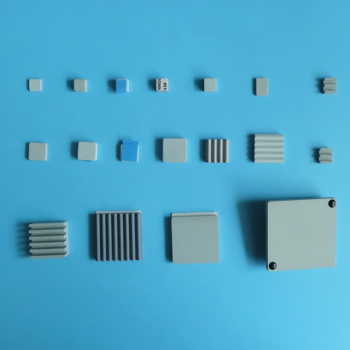High Purity Aluminum Oxide
Applications in High-Tech Industries
High-purity alumina (HPA) finds extensive applications across various high-tech industries, each leveraging its unique properties to enhance performance and reliability. In the realm of fluorescent materials, HPA is indispensable for producing high-quality phosphors, which are crucial for various lighting technologies, including LEDs and plasma displays. These phosphors require precise chemical purity and structural integrity, both of which are met by HPA.
In transparent ceramics, HPA is used to create materials that combine optical transparency with mechanical strength and thermal stability. This makes them ideal for applications such as transparent armor, high-pressure windows, and medical imaging devices. The optical clarity and durability of these ceramics are directly attributed to the high purity of the alumina used in their production.
The electronics industry benefits significantly from HPA in the form of electronic devices. High-purity alumina is used in the manufacturing of substrates for integrated circuits, providing excellent thermal conductivity and dielectric properties. This ensures that electronic components operate efficiently and reliably, even under high-stress conditions. Additionally, HPA is used in the production of crucibles for growing high-quality semiconductor crystals, which are essential for the fabrication of advanced electronic devices.
New energy technologies also rely on HPA for various applications. In solid-state batteries, HPA is used as a filler material in electrolytes, enhancing the battery's performance and lifespan. Its high purity and stability make it an ideal choice for these critical components, which are subjected to extreme conditions during operation. Furthermore, HPA is used in the production of photovoltaic cells, where its optical properties contribute to the efficiency of solar energy conversion.
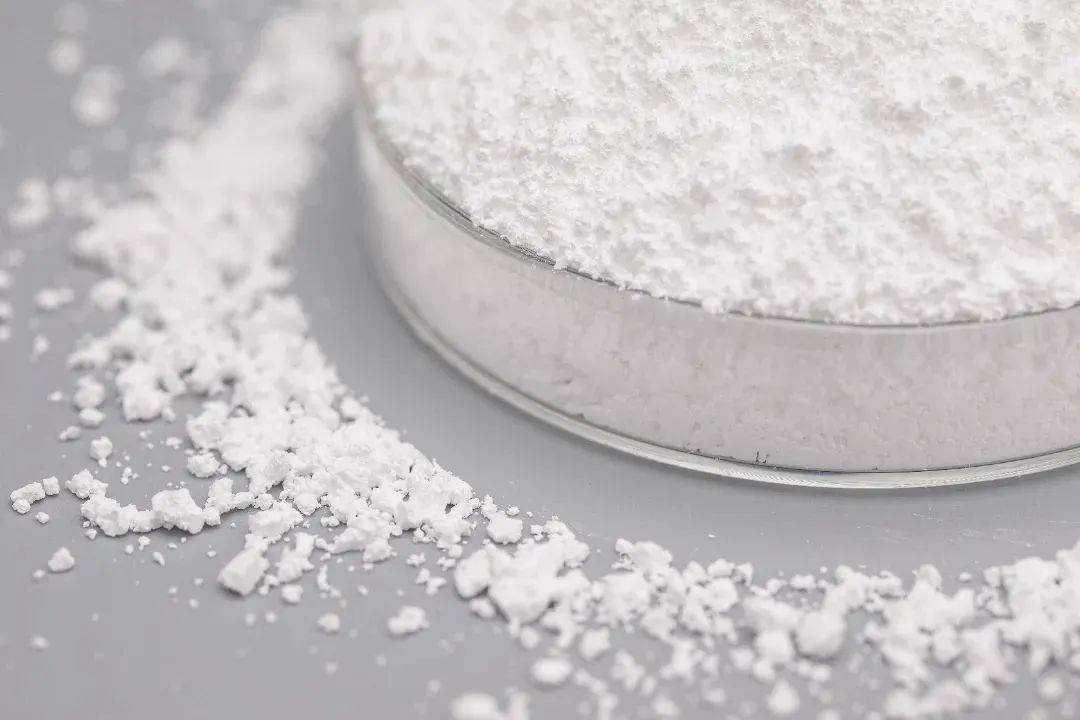
In the field of catalytic materials, HPA is used as a support material for catalysts, providing a stable and porous structure that enhances the efficiency of chemical reactions. This application is particularly important in industries such as petrochemicals and environmental protection, where catalytic processes are essential for producing various chemicals and reducing harmful emissions.
Lastly, aerospace materials benefit from the use of HPA due to its exceptional mechanical strength and thermal resistance. High-purity alumina is used in the production of components such as thermal protection systems, where its ability to withstand high temperatures and harsh environments is critical. This makes HPA an essential material for ensuring the safety and reliability of aerospace vehicles.
Overall, the diverse applications of high-purity alumina across these high-tech industries underscore its importance as a versatile and indispensable material in modern technology.
Market Trends and Future Outlook
The sapphire market, particularly in the LED industry, remains the largest consumer of high purity aluminum oxide. This dominance is driven by the LED industry's continuous demand for high-quality materials that enhance light emission and efficiency. The global sapphire market is projected to experience substantial growth, with its size expected to reach $10.7 billion by 2024. This growth is fueled by several factors, including the increasing adoption of LEDs in various applications such as automotive lighting, general illumination, and consumer electronics.
Moreover, the market is witnessing a shift towards more advanced sapphire materials that offer better performance and durability. This trend is supported by innovations in manufacturing technologies, which are making high-purity aluminum oxide more accessible and cost-effective. Additionally, the rising demand for energy-efficient lighting solutions is further propelling the market forward.
In terms of geographic trends, Asia-Pacific is expected to lead the market due to the presence of major LED manufacturers and the rapid industrialization in countries like China and India. North America and Europe are also significant markets, driven by stringent energy efficiency regulations and the growing adoption of smart lighting solutions.
Overall, the future outlook for the sapphire market appears promising, with sustained growth expected as the demand for high-quality, energy-efficient lighting solutions continues to rise.
Emerging Applications
High-purity alumina is not only revolutionizing traditional industries but also making significant inroads into cutting-edge technologies. As an electrode addition material, it enhances the performance of batteries by improving conductivity and stability, which is crucial for applications in electric vehicles and renewable energy storage systems. Moreover, its use as a solid-state battery electrolyte filler offers a safer alternative to conventional liquid electrolytes, reducing the risk of thermal runaway and enhancing overall battery safety.
In the semiconductor industry, high-purity alumina is indispensable for grinding and polishing processes, ensuring the surface finish and dimensional accuracy required for high-performance chips. This application underscores its role in advancing semiconductor technology, where even the slightest imperfections can compromise device efficiency and reliability.
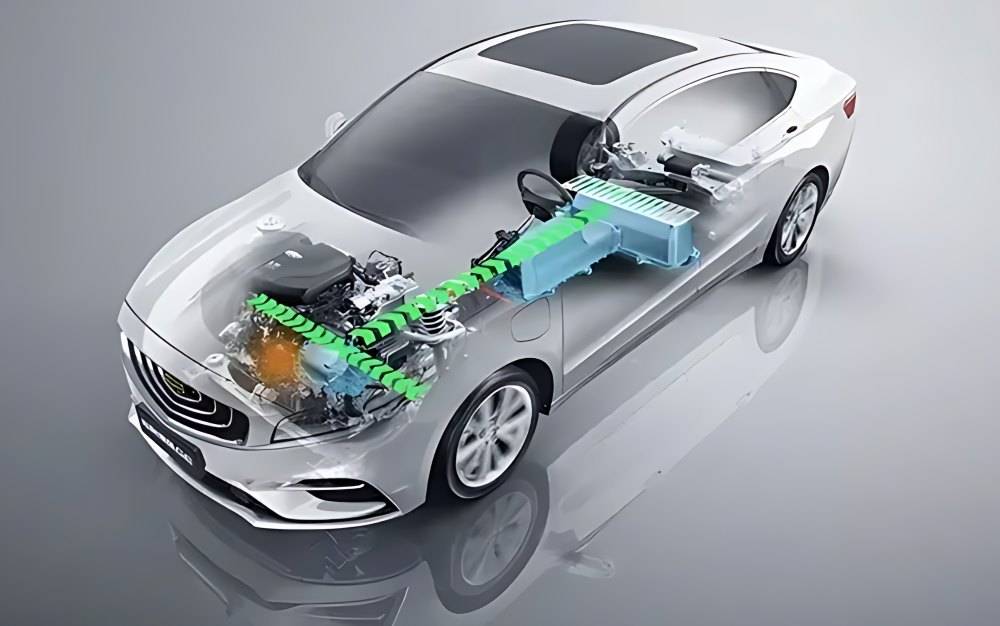
| Application Area | Benefits |
|---|---|
| Electrode Addition Material | - Enhances conductivity and stability in batteries |
| - Crucial for electric vehicles and renewable energy storage systems | |
| Solid-State Battery Electrolyte Filler | - Offers safer alternative to liquid electrolytes |
| - Reduces risk of thermal runaway in batteries | |
| Semiconductor Industry | - Essential for grinding and polishing high-performance chips |
| - Ensures surface finish and dimensional accuracy |
These emerging applications highlight the versatility and strategic importance of high-purity alumina in advancing both energy storage and semiconductor technologies.
Boehmite
Main Applications
Boehmite, a key inorganic coating material, plays a pivotal role in the lithium battery diaphragm industry. In 2022, its shipments surged to 32,000 tons, reflecting a remarkable year-on-year growth of over 70%. This significant increase underscores the material's critical importance in enhancing battery performance and safety.
The primary function of boehmite in lithium batteries is to reinforce the diaphragms, ensuring they remain stable under high temperatures and during rapid charge-discharge cycles. This stability is crucial for preventing short circuits and extending battery life, which are paramount for applications in electric vehicles and energy storage systems.
Moreover, boehmite's unique properties, such as its high thermal stability and excellent adhesion to various substrates, make it an ideal choice for advanced battery technologies. As the demand for high-performance batteries continues to rise, the market for boehmite is projected to expand further, driven by innovations in battery design and the growing adoption of electric vehicles.
In summary, boehmite's robust growth in the lithium battery sector highlights its indispensable role in advancing battery technology, paving the way for more efficient and reliable energy storage solutions.
Future Market Potential
The burgeoning markets for new energy vehicles and energy storage systems are poised to significantly boost the demand for Boehmite, a critical component in lithium-ion battery diaphragms. As these industries continue to expand, the need for Boehmite is expected to surge, driven by its unique properties that enhance battery performance and safety.
Key Drivers of Boehmite Demand
- Battery Performance Enhancement: Boehmite's high thermal stability and chemical inertness make it an ideal material for battery diaphragms, ensuring longer battery life and improved safety.
- Energy Storage Solutions: The rapid growth of the energy storage market, particularly in grid-scale storage systems, necessitates advanced materials like Boehmite to ensure efficient and reliable energy storage.
- Sustainable Mobility: The shift towards electric vehicles (EVs) is a major catalyst for Boehmite demand. As governments and automakers invest heavily in EV infrastructure, the market for Boehmite is set to experience substantial growth.
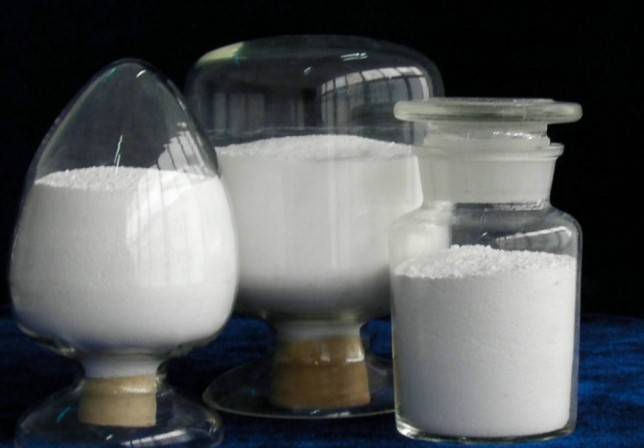
Market Projections
| Market Sector | Current Demand (2022) | Projected Demand (2025) | Growth Rate (CAGR) |
|---|---|---|---|
| New Energy Vehicles | 15,000 tons | 35,000 tons | 32% |
| Energy Storage Systems | 10,000 tons | 25,000 tons | 35% |
| Total | 25,000 tons | 60,000 tons | 33% |
The table above illustrates the projected growth in Boehmite demand across key sectors, highlighting the broad market space that is emerging. This growth is not only indicative of the material's increasing penetration but also underscores its critical role in the evolving energy landscape.
In summary, the future market potential for Boehmite is vast, driven by the expanding markets for new energy vehicles and energy storage systems. As these industries continue to innovate and scale, Boehmite stands to play an increasingly pivotal role, offering substantial opportunities for growth and development.
Other Important Markets
Boehmite, a versatile advanced ceramic powder, extends its applications beyond the primary markets, making significant contributions in various industries. Notably, it is employed in the production of adsorbents, where its high surface area and chemical stability are leveraged to purify gases and liquids. In the field of orthopedics, boehmite aids in the development of biocompatible materials, enhancing the durability and performance of implants.
In dentistry, boehmite is integral to the creation of dental ceramics, offering superior aesthetics and mechanical properties. Its use in biomedicine is equally profound, where it serves as a key component in drug delivery systems and tissue engineering scaffolds. Additionally, boehmite is utilized in the fabrication of high-performance copper-clad boards, contributing to the miniaturization and efficiency of electronic devices.
Furthermore, boehmite acts as a raw material for catalysts and reagents, playing a crucial role in chemical synthesis and environmental protection processes. These diverse applications underscore boehmite's pivotal role in advancing technology across multiple sectors.
Aluminum Nitride
Ideal for Heat Dissipation
Aluminum nitride (AlN) stands out for its exceptional thermal conductivity, a property that makes it indispensable in high-power, high-lead, and large-size chip packaging substrates. This advanced ceramic material efficiently dissipates heat, ensuring the stability and longevity of electronic components under intense operational conditions.
In the realm of semiconductor technology, AlN's thermal conductivity surpasses many other materials, making it a preferred choice for substrates that support high-performance chips. The ability to maintain low temperatures within these substrates is crucial for preventing thermal degradation and ensuring optimal performance.
Moreover, AlN's compatibility with various semiconductor materials, such as GaN, AlGaN, and AlN epitaxial layers, further enhances its utility. These combinations offer superior thermal matching and chemical compatibility, which are essential for the development of next-generation electronic devices.
In summary, aluminum nitride's outstanding thermal conductivity and compatibility with semiconductor materials position it as an ideal material for advanced chip packaging substrates, supporting the continuous evolution of high-performance electronics.
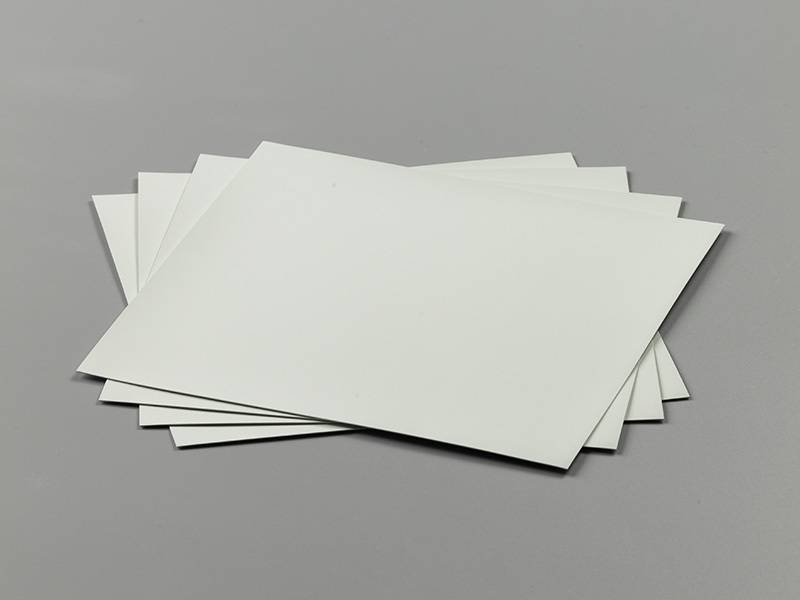
Compatibility with Semiconductor Materials
Aluminum Nitride (AlN) crystals serve as exceptional substrates for epitaxial growth of GaN, AlGaN, and AlN materials. This compatibility is rooted in their superior thermal matching and chemical affinity, which significantly enhances the performance and reliability of semiconductor devices.
The thermal matching property of AlN substrates ensures that the lattice constants of the epitaxial layers align closely with those of the substrate, minimizing defects and dislocations. This alignment is crucial for maintaining the structural integrity and electronic properties of the semiconductor layers.
Moreover, the chemical compatibility of AlN with these semiconductor materials allows for stable and uniform growth processes. This stability is essential for the fabrication of high-quality devices, particularly in applications requiring high-frequency and high-power operations, such as in the telecommunications and power electronics industries.
In summary, AlN's unique properties make it an indispensable material in the semiconductor industry, offering a robust foundation for advanced electronic devices.
Environmental and Health Benefits
Aluminum nitride (AlN) stands out not only for its exceptional thermal conductivity but also for its environmental and health benefits. As a non-toxic material, AlN poses no harm to human health or the environment, making it an ideal choice for applications where safety and sustainability are paramount. This characteristic is particularly significant in the realm of electronic devices, where materials must be both effective and innocuous.
Moreover, AlN's environmental friendliness extends beyond its non-toxic nature. It contributes to the reduction of electronic waste by enhancing the durability and efficiency of devices. By facilitating better heat dissipation, AlN-based substrates can extend the lifespan of electronic components, thereby reducing the frequency of replacements and the associated environmental impact.
In addition to its direct benefits, AlN also supports broader environmental goals by enabling the development of more energy-efficient technologies. For instance, in the automotive industry, AlN-enhanced electronics can contribute to the efficiency of electric vehicles, helping to reduce overall carbon footprints. This dual benefit—both in terms of health and environmental sustainability—underscores AlN's role as a key material in the future of electronics and beyond.
Silicon Nitride
Versatile Ceramic Material
Silicon nitride, a high-performance ceramic material, finds extensive applications across various industries due to its exceptional mechanical and thermal properties. One of its most notable uses is in high-speed turning tools, where its hardness and wear resistance allow for precise machining of tough materials. In the automotive sector, silicon nitride is integral to engine wiper blades and bearings, enhancing durability and performance in high-stress environments.
In aerospace engineering, silicon nitride is utilized in guiding blades and turbine blades of gas turbines, leveraging its high temperature resistance and low thermal expansion. Additionally, it serves as a heat dissipation substrate in electronics, facilitating efficient thermal management in high-power devices. Beyond these industrial applications, silicon nitride also plays a crucial role in the medical field as bioceramics, offering biocompatibility and strength in implants and prosthetics.
| Application | Industry | Benefits |
|---|---|---|
| High-speed turning tools | Manufacturing | High hardness, wear resistance |
| Engine wiper blades | Automotive | Enhanced durability, performance under stress |
| Bearings | Various | High load capacity, low friction |
| Gas turbine blades | Aerospace | High temperature resistance, low thermal expansion |
| Heat dissipation substrates | Electronics | Efficient thermal management |
| Bioceramics | Medical | Biocompatibility, strength in implants |
This versatile material continues to push the boundaries of what is possible in engineering and technology, making it a key player in the advancement of numerous industries.
Promising in Radomes
Silicon nitride stands out as the most promising material for radomes due to its exceptional mechanical properties, thermal stability, low dielectric constant, and robust resistance to ablative properties. These characteristics make it an ideal choice for applications where durability and performance under extreme conditions are paramount.
Key Advantages of Silicon Nitride for Radomes
- Mechanical Strength: Silicon nitride exhibits superior mechanical strength, enabling it to withstand high pressures and impacts without compromising its structural integrity.
- Thermal Stability: Its excellent thermal stability ensures that the material remains stable and functional even under high-temperature environments, which is crucial for radomes exposed to extreme weather conditions.
- Low Dielectric Constant: The low dielectric constant of silicon nitride reduces signal loss and improves the efficiency of electromagnetic transmissions, making it highly suitable for radar applications.
- Ablative Resistance: Silicon nitride's ability to resist ablation, or the process of being worn away by high-speed particles, ensures long-term durability and performance in high-stress environments.
These attributes collectively position silicon nitride as the leading candidate for radome materials, promising enhanced performance and longevity in critical aerospace and defense applications.
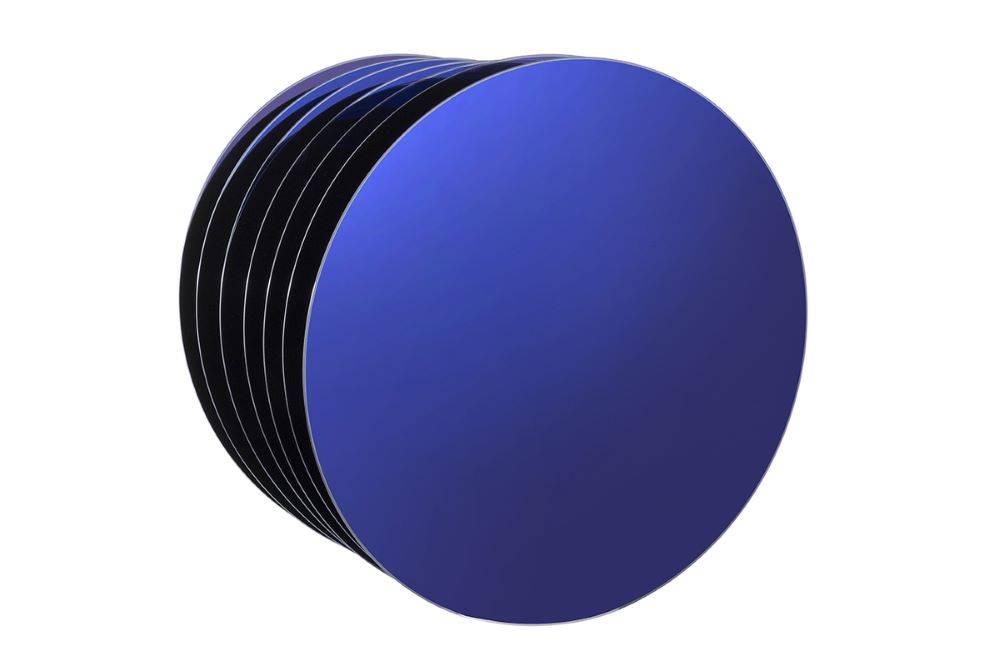
Main Applications
Silicon nitride has garnered significant attention for its use as a bearing ball material and a heat dissipation substrate material. Among its various applications, bearing balls stand out as the most widely utilized product. These bearing balls offer superior mechanical properties, including high hardness, wear resistance, and excellent thermal stability, making them indispensable in industries requiring precision and durability.
In addition to bearing balls, silicon nitride is also employed in a variety of other critical components. For instance, it is used in engine wiper blades, guiding blades of gas turbines, and turbine blades, where its high strength and thermal shock resistance are particularly advantageous. Furthermore, silicon nitride's role as a heat dissipation substrate is crucial in electronic devices, where efficient heat management is essential for optimal performance and longevity.
| Application | Benefits |
|---|---|
| Bearing Balls | High hardness, wear resistance, excellent thermal stability |
| Engine Wiper Blades | High strength, thermal shock resistance |
| Guiding Blades of Gas Turbines | High strength, thermal shock resistance |
| Turbine Blades | High strength, thermal shock resistance |
| Heat Dissipation Substrates | Efficient heat management, optimal performance, longevity |
Silicon nitride's versatility and superior mechanical properties make it a material of choice in high-tech industries, ensuring reliability and performance in a wide array of applications.
Spherical Alumina
Mainstream Thermal Conductive Powder
Spherical alumina has solidified its position as the most prevalent thermal conductive powder in the high-end thermal conductivity sector. This dominance is attributed to several key factors:
- High Thermal Conductivity: Spherical alumina excels in heat transfer, making it indispensable for applications requiring efficient thermal management.
- High Filling Coefficient: Its ability to be densely packed within materials ensures optimal performance without compromising on space.
- Good Mobility: The powder's fluidity during processing facilitates uniform dispersion, enhancing the overall effectiveness of thermal conductive materials.
- Mature Technology: The extensive research and development invested in spherical alumina have resulted in a robust and reliable manufacturing process.
These characteristics collectively position spherical alumina as the go-to option for industries demanding superior thermal conductivity, from electronics to new energy vehicles.
Market Growth and Future Outlook
The global spherical alumina thermal conductive powder market is poised for significant expansion, with forecasts projecting a market size of 5.40 billion yuan by 2025. This growth is underpinned by a robust compound annual growth rate (CAGR) of 28.2%, reflecting the increasing demand for advanced thermal management solutions across various industries.
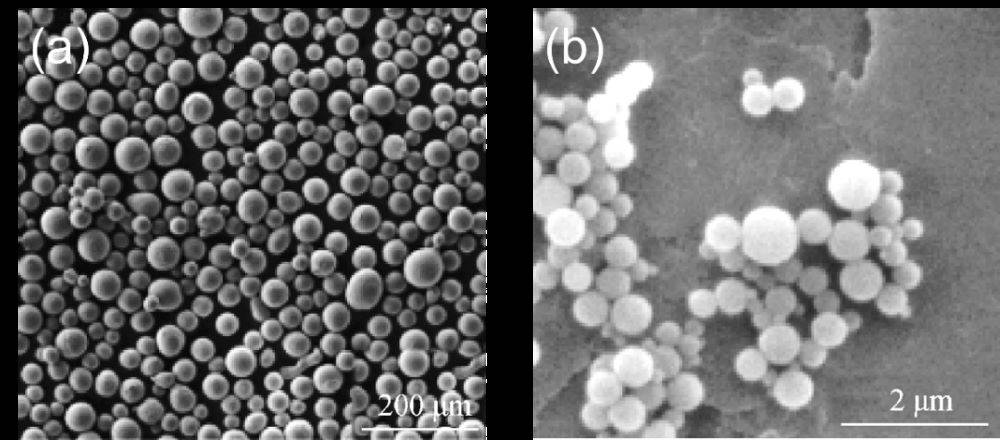
Key Drivers of Market Growth
-
Technological Advancements: The continuous improvement in manufacturing processes and the development of higher-performance spherical alumina powders are driving market expansion. These advancements enhance the thermal conductivity and processing efficiency of the materials, making them more attractive for high-end applications.
-
Rising Demand in Electronics: The electronics sector, particularly in smartphones, tablets, and high-performance computing devices, is a major consumer of spherical alumina. The need for efficient heat dissipation in these devices is fueling the demand for thermal conductive powders.
-
New Energy Vehicles (NEVs): The burgeoning NEV market is another significant driver. Spherical alumina is extensively used in thermal management systems for batteries, electronic control units, and motors, ensuring optimal performance and safety in electric vehicles.
-
Aerospace and Defense: The aerospace and defense sectors are increasingly adopting spherical alumina for its superior thermal properties. Applications range from heat shields to thermal protection systems, contributing to the market's growth.
Future Outlook
The future of the spherical alumina market looks promising, with several emerging trends expected to shape its trajectory:
- Innovation in Material Science: Ongoing research and development are likely to yield new formulations and applications, further boosting market growth.
- Sustainability Initiatives: Growing environmental concerns are pushing manufacturers to adopt eco-friendly production methods, which could lead to the development of more sustainable spherical alumina products.
- Global Expansion: Emerging markets in Asia-Pacific, particularly China and India, are expected to witness significant growth due to rapid industrialization and increasing investments in advanced materials.
In summary, the spherical alumina thermal conductive powder market is set to experience substantial growth, driven by technological advancements, rising demand in key sectors, and global market expansion.
Applications in New Energy Vehicles
Spherical alumina plays a crucial role in enhancing the thermal management systems of new energy vehicles (NEVs). Specifically, it is incorporated into thermal conductive materials and thermal interface materials (TIMs) for NEV batteries, electronic control units (ECUs), and motors. These applications are vital for maintaining optimal operating temperatures, ensuring the longevity and efficiency of these critical components.
For NEV batteries, spherical alumina-infused thermal conductive materials facilitate efficient heat dissipation, preventing thermal runaway and ensuring safe operation. The high thermal conductivity of spherical alumina ensures that heat generated during battery operation is effectively managed, thereby extending the battery's lifespan and enhancing its performance.
In ECUs, spherical alumina is used in TIMs to bridge the gap between the electronic components and the heat sink, ensuring rapid and efficient heat transfer. This is particularly important in ECUs, which generate significant heat during operation. By using spherical alumina, the risk of overheating is minimized, thereby improving the reliability and performance of the ECU.
Similarly, in NEV motors, spherical alumina is employed in thermal conductive materials to manage the heat generated during high-speed operation. This helps in maintaining the motor's efficiency and reducing the risk of mechanical failure due to overheating. The use of spherical alumina in these applications underscores its importance in the overall design and performance of new energy vehicles.
Related Products
- Advanced Engineering Fine Ceramics Aluminum Nitride (AlN) Ceramic Sheet
- Engineering Advanced Fine Alumina Al2O3 Ceramic Rod Insulated for Industrial Applications
- High Purity Alumina Granulated Powder for Engineering Advanced Fine Ceramics
- High Quality Alumina Ceramic Screw for Engineering Advanced Fine Ceramics with High Temperature Resistance and Insulation
- Advanced Engineering Fine Ceramics Low Temperature Alumina Granulation Powder
Related Articles
- Advanced Alumina Ceramics: Applications and Manufacturing Techniques
- Advanced Alumina Ceramics: Applications and Manufacturing Techniques
- Precision Ceramic Materials for Energy Conversion Applications
- Mechanical Properties and Structural Enhancements of Ceramics
- MPCVD Single Crystal Diamond Applications in Semiconductor and Optical Display Fields


